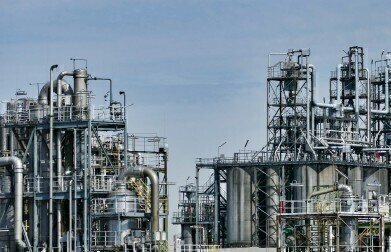Fuel for thought
Who Are the World's Biggest Oil Suppliers?
Mar 21 2016
For decades, Russia and Saudi Arabia have thrived as the biggest oil suppliers on the planet. But with price drops shaking the market, regional stability disrupting production and new energy sources being discovered, could their dominance be starting to sway?
The USA ups its game
In 2015, new research from BP Plc’s Statistical Review of World Energy revealed that the US had stolen the crown as the world’s biggest oil and natural gas producer. In the wake of the shale revolution American producers triggered seismic shifts in the global energy market, resulting in the US churning out a colossal 13,973,000 barrels a day. This represents a 1.6-million-barrel rise on the same figure from last 2014’s statistics.
“We are truly witnessing a changing of the guard of global energy suppliers,” comments BP Chief Economist Spencer Dale. “The implications of the shale revolution for the U.S. are profound.”
Saudis trail close behind
Saudi Arabia may have been knocked off the top notch, but that doesn’t mean it’s slumped entirely. The desert country is still the world’s second biggest producer, with 11,624,000 barrels per day.
In third place is Russia, with its daily output maxing out at 10,853,000 barrels. This is largely thanks to its move to Arctic waters, which has unlocked around 100 billion barrels of oil for the nation’s producers. China is the next key player, with 4,572,000 barrels per day. It’s a significant jump from Russia’s 10 million plus count, yet still makes a weighty contribution to the world energy market. Finally, Canada has retained its place as a top dog, with around 4,400,000 barrels per day.
The final five
The UAE just missed out on a place in the top five, despite the fact that it’s an OPEC member. It produced 3,471,000 barrels per day, followed closely by Iran with 3,375,000. With international sanctions against Iranian exports lifted earlier this year, production is expected to spike, which could see it emerge as a top five leader. Iraq followed closely behind, with Brazil and Mexico recognised as the ninth and tenth largest oil producers, respectively.
It’s clear that a myriad of different factors has elicited a new world order for the energy industry. Will the top dogs retain their status, or will smaller nations step up and challenge their reign?
Analysts are predicting that global oil inventories will continue to grow in 2016, with the EIA forecasting an annual average of 1.6 million b/d in 2016 and 0.6 million b/d in 2017. The aviation industry will play a central role in fuelling demand, with major lines predicting significant passenger growth. For more insight into the sector, ‘The Future of Jet Fuel Thermal Oxidation Heater Tube Scanning’ explores the critical process of jet fuel thermal oxidation testing, and the growing need for more reliable methods to validate heater tube readings.
Digital Edition
PIN 26.1 Feb/Mar 2025
March 2025
Analytical Instrumentation - Elemental Analysis for Quality and Process Control at Refineries, for Lubricants and Wear Metals in Engine Oils - Synthetic Lubricants: New Developments - Scaling...
View all digital editions
Events
Apr 08 2025 Birmingham, UK
Apr 08 2025 Kielce, Poland
Apr 08 2025 Ravenna, Italy
Apr 08 2025 Southampton, UK
Apr 08 2025 London, UK



















